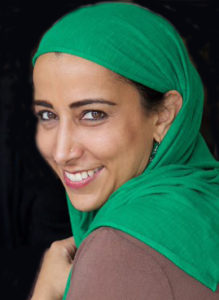teaching methods
Select an item by clicking its checkbox
Laughter is an important ingredient in my classroom. I bank on my ability to make students laugh with my often-droll sense of humor, but I also frequently rely on professional comedians through the magic of the Internet. The status of Islam and Muslims in political satire, specifically in the genre ...

Looking and Learning: Visual Literacy across the Disciplines (New Directions for Teaching and Learning, Number 141)
Date Reviewed: November 30, -0001
The editors of Looking and Learning argue that institutions of higher education have required textual literacy for centuries, but now are facing a problem: they have not cultivated visual literacy in an age when visual input has risen exponentially in volume, pace, and cultural significance. Little, Felten, and Berry propose to address this problem pedagogically throughout academic curricula. Eight contributing authors bring disciplinary-based tools to the conversation, discussing pedagogical approaches and outcomes for students’ development of visual literacy as a means of depth-learning.
One of the most valuable features of this volume is the introduction of the Association of Colleges and Research Libraries’ (ACRL) definition, promotion, and list of observable performance standards with outcomes for visual literacy (3, 8). Looking and Learning then details particular courses and pedagogical approaches by professors who claim that visual learning significantly enhances student perceptions of data and experience, deepens engagement with course material, and sharpens critical thinking skills – all important outcomes for effective education.
Chapter one, for example, focuses on visually-based pedagogical approaches for learning astronomy. A pedagogical shift came to Anthony Crider when he began to emphasize visual and information literacy skills rather than content delivery in his courses (16). He found that as a result, his students learned to think through problems more deeply and effectively. Now, close observations of the objects and phenomena in space are required, followed by deductive thinking to frame arguments for hypotheses and proofs.
Chapter two provides pedagogical tools that move students from subjective reactions to critical responses when encountering a visual input. In this chapter, like Crider, Michael Palmer focuses on developing the critical skills for visual literacy, rather than content-based learning. Likewise, chapter three shows how Katherine Hyde uses photography to cultivate sociological mindfulness and social identity (31). Cedar Riener teaches about visual perception in chapter four, using pictorial illusion to demonstrate that perception is not always accurate. Chapters five and six speak to “deep learning” through work with visual media including historical paintings (Steven S. Volk), and film-making (Alison J. Murray-Levine). The intent is to slow visual inputs so there is actual engagement and analysis of the subject matter as a visual story and language. Chapter seven introduces the process and structure of critique in the area of visual arts (Phillip Motley). The volume concludes in chapter eight with Deandra Little providing suggestions and strategies for teaching visual literacy throughout a curriculum (87).
For those who are visually impaired or have difficulty interpreting visual cues and yet are able to hear, there is little aid in this volume. One exception occurs in chapter five where historian Steven S. Volk helpfully introduces students’ auditory input for a person who is not sighted, discovering that learning is enhanced for everyone. Perhaps auditive literacy is the next logical educational contribution for learning by senses. Data and experience come through many senses; pedagogical approaches are likely to have to address these different avenues of learning as attention to differing abilities expands both culturally and legally.
Ultimately, the editors and contributors call for all teachers and students to “learn to look and look to learn” (5). Such a challenge seems obvious, achievable, and pedagogically meaningful (for the sighted) as an effective educational focus for literacy – literacy for a visual age.

Teaching for Learning: 101 Intentionally Designed Educational Activities to Put Students on the Path to Success
Date Reviewed: November 30, -0001
The authors of this extremely helpful book open with an observation that is often true: there is a lot of research on how to teach effectively, but “this information tends to be inaccessible to most instructors, as it has been published piecemeal in journals that instructors frequently do not read” (xi). To help remedy this lamentable situation, they have sifted through hundreds of studies in teaching and learning in order to compile a list of educational activities that both work in real world settings and are supported by research. In other words, if you have ever wondered what kinds of teaching actually lead to learning (retention, critical thinking skills, creative application), and you would like to do a better job of varying your pedagogical approaches, then this book will be of interest to you.
Each of the eight chapters focus on a particular kind of teaching and learning format, including lecture, discussion, peer teaching, academic games, reading strategies, writing, graphic organizers, and metacognitive reflection. In clear prose, the authors explain the strengths and drawbacks of each kind of teaching as well as what researchers have found concerning each approach’s effectiveness. For example, lectures work better when instructors keep the lectures short, focused on essentials, and when accompanied with frequent quizzing and guides to effective note-taking. After establishing what works according to research, the authors provide detailed “Intentionally Designed Educational Activities” (IDEAs) to help instructors teach in a way that has been proven to lead to learning. Again, using lecture as an example, some of the suggested activities include guided note-taking, a “find the flaw” exercise, the Socratic seminar, and lecture bingo. The IDEAs, which are delightful and often fun, are cross-referenced with other teaching activities in the book and include helpful “pro-tips” to give additional guidance on implementation. This clear structure makes the book one that can be read cover-to-cover as well as a handy reference volume for specific classroom situations.
Both seasoned and new teachers will get a lot out of this book. New instructors will find the help they need when trying to translate their graduate education into effective teaching. More seasoned teachers will find some tried-and-true methods confirmed but will also encounter new ideas to reinvigorate the classroom. While some of the 101 IDEAs in the book are clearly designed for mathematics or scientific fields, the vast majority are well-suited to humanities and social sciences and will be right at home in religious studies and theological departments at both undergraduate and graduate levels. This book has the potential to greatly improve our day-to-day teaching; our students will be grateful.
I write in a time when the study of Islam is of paramount importance. This blog entry focuses on the teaching of Islam in interreligious settings, with an eye toward the notion of pluralism. So often, engaging this tradition starts with the assumption that the production of its knowledge was ...

An Illinois Sampler: Teaching and Research on the Prairie
Date Reviewed: June 16, 2015
While this book is dedicated to students, chapters showcase the dedication of professors to providing effective learning formats in diverse fields. An Illinois Sampler: Teaching and Research on the Prairie highlights teaching methods at the University of Illinois that can be applied elsewhere. It would be an excellent book for a new professor, including one looking for field opportunities for their students. The nineteen chapters are very short, but in essence provide quickly consumable case studies of everything from inmate education and research abroad to flipped classrooms and the standard lecture format. It would work well for a small group discussion of education students who could read it together while in session. Topics for small group discussion could include holistic education, teaching from the sciences and humanities, and student-centered learning.
Higher education administrators might also appreciate an overview of some of the programs at the University of Illinois. However, these chapters are just glimpses of the authors’ insights; some readers might need to pursue further research. Examples like Rosu’s highlights of the iFoundry program created by the engineering faculty and Denofrio-Corrales and Lu’s innovative Chemistry and Biology of Everyday Life (CBEL) course structure organize around students’ interests. Precisely how they do it could be the theme for another book. Instead of a recipe, we are given a taste of the passion and flavor of University of Illinois teaching practices.
This book is dedicated to students. The authors capture a learning environment that alumni and current students can be proud of, but the Illinois Sampler shows that across the spectrum, the professors dedicate their work to their students. In pages of reflection by faculty in the humanities and sciences serving traditional and nontraditional students, teaching with traditional and nontraditional methods, An Illinois Sampler teaches what it means to teach: It is a statistics professor trying to make numbers lead to a better quality of life. It is a lecturer uncovering the living complexity of once simple fairy tales. It is an education behind bars professor who liberates minds. It is the professor learning from collaboration with their students, and reigniting a teaching passion for and by them.
This book acts as a sampler in its composition, moving from highlights in music to math to literature to science to dance. Unconventionally juxtaposed, one discipline does not outweigh the other. Everyone will be able to find something appealing in it because of the broad inclusion, and, readers will gain knowledge from perspectives across disciplines. It should also be noted that contributors “vary not only by expertise but also in age, gender, nationality, career stage, and even their position in the academic hierarchy” (ix). The real success of this book is the variety. An Illinois Sampler is both a recommended read and endeavor.

